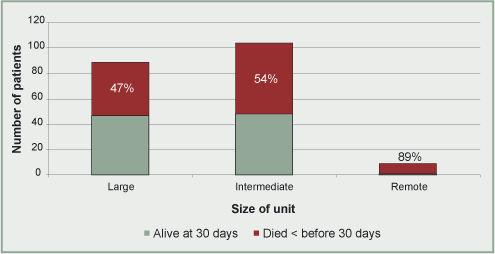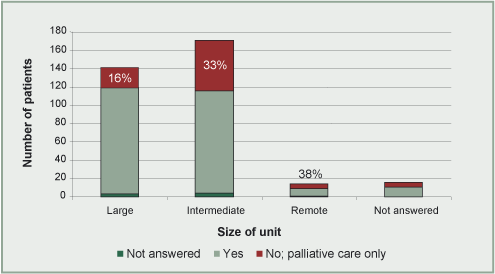Outcome of surgery >> Ruptured aneurysms
Outcome after operation for ruptured AAA is strongly influenced by how many patients who present with a ruptured aneurysm actually proceed to operation. It is reasonable to assume that a decision not to operate, whether made by the patient, the family, or the surgeon, is more likely when the outcome is thought to be particularly hopeless; therefore a hospital that has a greater propensity to recommend non-operative, palliative treatment will tend to have a better outcome for those patients who do undergo surgery.
Figure 13 presents the outcome for patients in this study admitted with a ruptured AAA, whether or not the patient went for surgery; that is, the figures for the patients who died include the patients who received palliative care as well as those who died within 30 days of surgery.
Figure 13. Outcome in ruptured emergency open repairs by size of vascular unit (including palliative patients n=202/212. Percentages refer to patients who died in hospital within 30 days.
According to these data a greater proportion of patients died in intermediate sized units. This was associated with a greater reluctance by intermediate sized units to operate on patients admitted as an emergency with an aortic aneurysm (Figure 14).
Figure 14. Decision to operate on emergency cases (including palliative patients) by size of vascular unit n=342. Percentages refer to patients who received palliative care only.
Back to top
|

